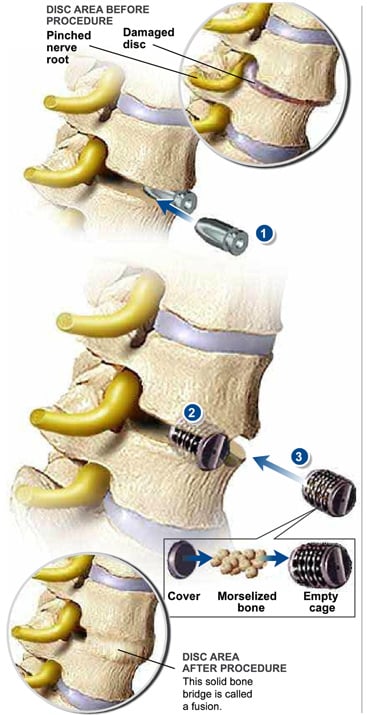 “Lateral lumbar interbody fusion” is a mouthful, which is why many doctors and their patients prefer the initials XLIF. Besides being a lot of words to spit out, the procedure sounds daunting. The exact opposite is true, however, because the XLIF is one of those minimally invasive options that have put the Southeast Spine Institute on the map.
“Lateral lumbar interbody fusion” is a mouthful, which is why many doctors and their patients prefer the initials XLIF. Besides being a lot of words to spit out, the procedure sounds daunting. The exact opposite is true, however, because the XLIF is one of those minimally invasive options that have put the Southeast Spine Institute on the map.
The X in XLIF stand for eXtreme, which hopefully is the amount of relief that you feel once you’ve undergone the procedure. The eXtreme Lateral Lumbar Interbody Fusion gives your back surgeon the option to approach a spinal fusion from your side instead of from your front or back. The benefits are significant and include:
- Reduced time for the operation
- Fewer recovery days
- Minimal scarring
- Less blood loss
- Less post-operative pain
- Quicker return to your daily activities
Best for Certain Diagnoses
The lateral lumbar interbody fusion cannot be performed on every kind of spinal disorder that requires a fusion. After undergoing extensive tests and trying other forms of treatment, your spinal physician may recommend an XLIF if you have:
- Degenerative disc disease
- Thoracic disc herniation
- Scoliosis caused by degeneration
- Deformities
- Lumbar disc herniation
- Low-grade spondylolisthesis
XLIF is an outpatient procedure that’s not recommended for spinal issues such as:
- High-grade spondylolisthesis
- When you need fusion on a low-riding L4 or L5
- Fusion is needed too close to your pelvic region and inaccessible from the side
- For deformities that cause rotation difficulties
Technology Expands for Minimally Invasive Procedures
Thanks to the technological breakthroughs that the Southeast Spine Institute intensely pursues, you won’t need the traditional, huge incision for the doctor to perform the necessary spinal fusion. Instead, it’s performed with one or more tiny incisions and a medical device called a retractor that’s used to spread apart overlying tissue to give the doctor a clear view of your spine.
The retractor and dilator system used in the lateral lumbar interbody fusion is called MaXcess® and was developed by San Diego, California-based NuVasive®, Inc. Your spine surgeon can actually reach your spine via a lateral view from your side. This kind of technology allows you to get relief from back pain with minimal muscle and ligament tampering and no disruption to your abdominal muscles.
Recovery from XLIF
As with any kind of surgery, minimally invasive or not, recovery time varies among individuals. So much depends on your general health before the surgery, as well as your willingness to follow post-operative instructions to the letter. For the most part, however, you can expect to:
- Get up and walk immediately following the procedure since no muscles were cut, but instead were just pulled slightly apart.
- Feel some minor pain; after all, your muscles were pulled apart and your body underwent some level of trauma from which it must heal.
- Notice a major difference in the level of pain where you previously experienced it. In other words, you’ll notice right away that the lateral lumbar interbody fusion worked, instead of having to wait for a gradual return to normalcy if you had a more tradition fusion surgery.
